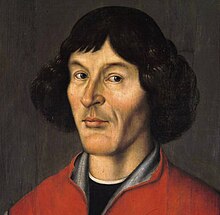 On Saturday, June 1st, I was visited the California Science Center, located in Los Angeles, with my father. Although I had visited the California Science Center previously with my middle school, the trip with my father this time around was still very interesting and enjoyable, as I was able to view some exhibits that I did not recall visiting with during my previous trip. One of the first things that struck me about the incredible variety of exhibits that the California Science Center holds is the two hanging fighter jets that are displayed as you first enter into the center. One of the jets, the F-20 Tigershark, was actually a fighter jet designed by Northrop that was never purchased or mass-produced, and the one on display at the center is the last prototype of that model in existence. The other jet, the Northrop T-38 Talon, was the first twin engine, high-altitude supersonic jet trainer aircraft. In addition to these fighter jets, my father and I also visited a number of other air and space exhibits throughout the California Science Center, including the Apollo-Soyuz Command Module. This exhibit was very interesting to me because of its history, as this module was used by American astronauts to rendezvous with a Russian Soyuz spacecraft in Earth’s orbit. Cooperation between the Soviet Union and United States in the field of space exploration was not a usual site, as the two were constantly competing against each other for numerous years, so it was interesting and surprising to actually view an exhibit that signified this cooperation.
On Saturday, June 1st, I was visited the California Science Center, located in Los Angeles, with my father. Although I had visited the California Science Center previously with my middle school, the trip with my father this time around was still very interesting and enjoyable, as I was able to view some exhibits that I did not recall visiting with during my previous trip. One of the first things that struck me about the incredible variety of exhibits that the California Science Center holds is the two hanging fighter jets that are displayed as you first enter into the center. One of the jets, the F-20 Tigershark, was actually a fighter jet designed by Northrop that was never purchased or mass-produced, and the one on display at the center is the last prototype of that model in existence. The other jet, the Northrop T-38 Talon, was the first twin engine, high-altitude supersonic jet trainer aircraft. In addition to these fighter jets, my father and I also visited a number of other air and space exhibits throughout the California Science Center, including the Apollo-Soyuz Command Module. This exhibit was very interesting to me because of its history, as this module was used by American astronauts to rendezvous with a Russian Soyuz spacecraft in Earth’s orbit. Cooperation between the Soviet Union and United States in the field of space exploration was not a usual site, as the two were constantly competing against each other for numerous years, so it was interesting and surprising to actually view an exhibit that signified this cooperation.
However, the most memorable and enjoyable part of my experience at the California Science Center was visiting the Endeavor Space Shuttle. The Endeavor Space Shuttle completed 25 missions in space, and it was incredibly interesting to view the large size and details of the spacecraft. One of largest components of the Endeavor Space Shuttle were its main engines, which, in conjunction with the large rocket boosters, provided the space shuttle with over one and a half million pounds of thrust! Viewing the Endeavor Space shuttle reminded me of the correlation between space and art, as its explorations of space not only provided scientists with information about the cosmos, but also inspired artists to create more advanced and lifelike representations of the universe through films and novels.





